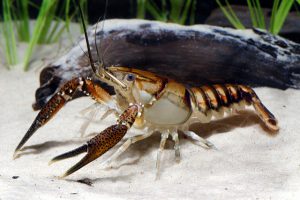Neonicotinoids may pose risks for aquatic wildlife
 Photo Credit: U.S. Fish and Wildlife Service
Photo Credit: U.S. Fish and Wildlife Service
Recent research published in the academic journal PLOS ONE has found that water contaminated with neonicotinoid pesticides may pose a health risk for some aquatic wildlife. Neonicotinoids, which are the most used class of insecticides in the world, are a water pollution concern because they are water-soluble and bind poorly to soil, making them easily washed off of fields and into waterways. Researchers from Purdue University assessed the risk that these insecticides may pose to aquatic wildlife using a combination of field and laboratory experiments. In the laboratory, aquatic animals were exposed to water contaminated with the insecticide clothianidin at various concentrations. Freshwater snails and amphibian larvae had no observable negative effects even at the highest exposure level. Water bugs and crayfish, respectively, exhibited reduced feeding rates and reduced responsiveness to stimulus. Finally, the researchers observed that aquatic invertebrate predators experienced high mortality when exposed to higher levels of clothianidin, leading to surges in prey populations. Thus, neonicotinoid contamination may disrupt the stability of aquatic communities. In the field site in Indiana, authors sampled water and soil for contamination and found that more than 56% of soils sampled and over 90% of water samples were contaminated with neonicotinoids. These results suggest that neonicotinoid insecticides are pervasive environmental contaminants and that more research is needed to understand their effects on aquatic ecosystems.

